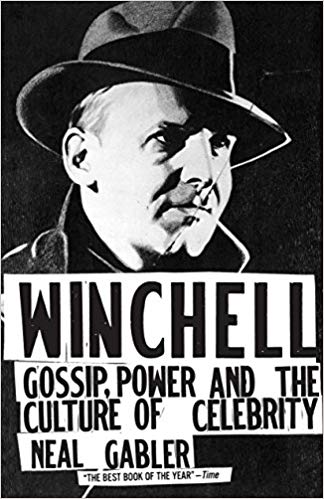Christopher Bonanos' 6 favorite New York City biographies
The award–winning author recommends works by Neal Gabler, Susan Brownmiller, and more

Christopher Bonanos is the National Book Critics Circle Award–winning author of Flash: The Making of Weegee the Famous, now in paperback. Below, New York Magazine's longtime city editor recommends six great New York City biographies.
Winchell by Neal Gabler (1994).

The most powerful and popular newspaper columnist of the 20th century — of all time, really — was a self-aggrandizing creep, and his late-in-life comeuppance was dramatic and humiliating. Gabler's irreplicable research (because Walter Winchell's archive has since been broken up and sold) makes this definitive.
The Week
Escape your echo chamber. Get the facts behind the news, plus analysis from multiple perspectives.

Sign up for The Week's Free Newsletters
From our morning news briefing to a weekly Good News Newsletter, get the best of The Week delivered directly to your inbox.
From our morning news briefing to a weekly Good News Newsletter, get the best of The Week delivered directly to your inbox.
de Kooning by Mark Stevens and Annalyn Swan (2004).

An evocative biography of Willem de Kooning that broadens out to become a visit to the New York art world when it was still small and weird. The authors pair superior art criticism with great storytelling.
In Our Time by Susan Brownmiller (1999).

A history of the feminist movement of the 1970s by the reporter turned activist who was at its center, this is a great memoir whose valuable lesson is that social movements are nonlinear and messy, with internal factions and squabbles and rifts, as people argue their way to enlightenment.
A free daily email with the biggest news stories of the day – and the best features from TheWeek.com
The Power Broker by Robert Caro (1974).

It feels a little duh to include Caro's Robert Moses biography — but really, it is as unskippable and unforgettable as everyone says. Nobody digs through a paper trail as doggedly as Caro does; nobody has ever done a better job explaining the ways in which a single person formed the modern metropolis, or the ways in which power both emboldens and entrenches.
Just Kids by Patti Smith (2010).

Punk legend Patti Smith was also Robert Mapplethorpe's muse, and he was hers. The two were lovers who eventually, after his coming-out, remained the closest of friend-collaborators until his 1989 death. I can't imagine a more vivid and romantic description of what it was like to be young and artsy and hungry and fearless in the broken-down New York of the '70s.
The Man in the Glass House by Mark Lamster (2018).

Here's all 98 years of the life of that wily rich-kid-aesthete-fascist-turned-corporate-smooth-talker Philip Johnson, who never met an architectural trend he didn't glom onto. What a career! At one point in the 1980s, he proposed a Manhattan skyscraper entered via a drawbridge over a moat full of alligators. It was designed, you will perhaps not be surprised to learn, for Donald Trump.
-
 Hegseth moves to demote Sen. Kelly over video
Hegseth moves to demote Sen. Kelly over videospeed read Retired Navy fighter pilot Mark Kelly appeared in a video reminding military service members that they can ‘refuse illegal orders’
-
 Delcy Rodríguez: Maduro’s second in command now running Venezuela
Delcy Rodríguez: Maduro’s second in command now running VenezuelaIn the Spotlight Rodríguez has held positions of power throughout the country
-
 Maduro pleads not guilty in first US court hearing
Maduro pleads not guilty in first US court hearingSpeed Read Deposed Venezuelan leader Nicolás Maduro and his wife Cilia Flores pleaded not guilty to cocaine trafficking and narco-terrorism conspiracy